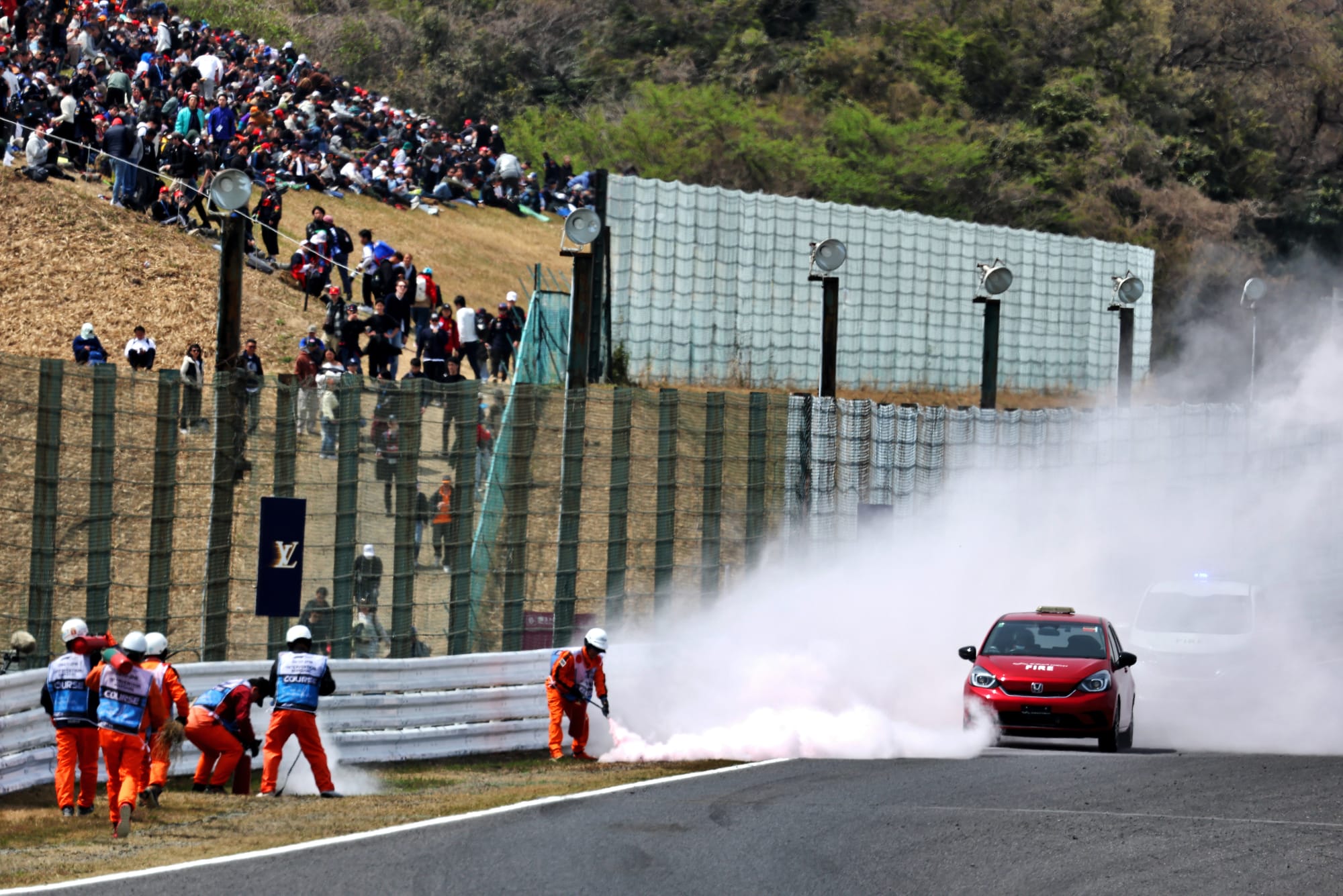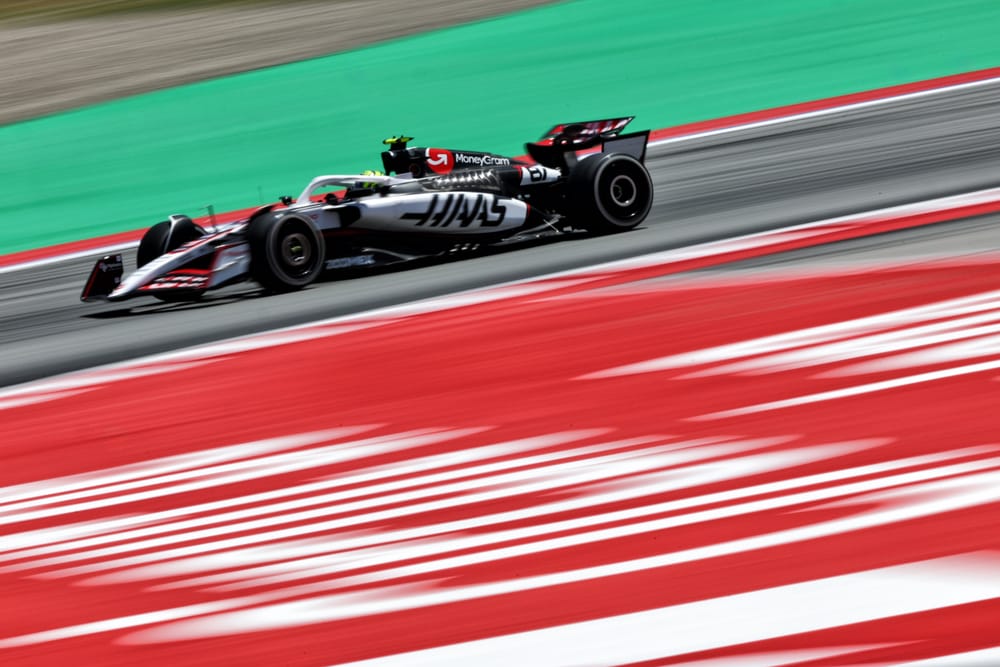Steel skid blocks which effectively "wear down like butter" could force Formula 1 teams to raise their car ride-heights later this year if they are made mandatory at specific grands prix.
As first revealed by The Race, F1 teams are conducting tests on underfloor skid blocks made from steel rather than the more traditional titanium during the free practice sessions at Barcelona on Friday.
The FIA has asked teams to run one car with the new steel configuration that it believes will produce less intense sparks to hopefully avoid a repeat of the grass fires that marred the Japanese GP weekend.
While the change to the underside of the car seems quite innocuous, as teams have evaluated the impact of the potential switch to steel they have started to realise some of the technical headaches it can cause.
Beyond the increase in weight of around 750 grammes - because steel is heavier than titanium - of more concern is the fact that the new blocks will likely wear away much faster.
And, as Sauber's sporting director Inaki Rueda revealed at the Spanish Grand Prix, this could open the door to teams being forced to raise their cars higher than they would like to avoid the skid blocks and plank being worn away too much.
"The difference in weight is not that much, but it's from the wear," he said when asked by The Race about the potential compromises the new skid blocks could cause.
"The wear is significantly different.
"As you know right now, all teams in the pitlane are running the car as low as they can to the ground. And this we measure by how much we wear these skid blocks.
"Of course when you fit a steel block, it wears down like butter compared to titanium. So you do have to run a different set-up."
Rueda said that it was too early to judge just how much teams would have to raise their ride heights, with one of the aims of Friday running at Barcelona being to get a better understanding of this.
However, he thinks the issue could become critical at tracks that are bumpy and feature a lot of kerb riding.
"When we come to a track, we try to go as low as we can," he said. "We usually use FP1 and FP2 running to see how low we can go and we measure the skid wear on Friday night based on what we've learned. So we either lower it more because we can, or we raise it because we cannot.
"This is no different with the steel blocks but we just know that they wear more. So if you have a very rough circuit with big kerbs, it wears much more than if you have a very smooth circuit with no kerbs."
But while the new skid blocks could cause some technical headaches for teams, Racing Bulls' Alan Permane reckoned it was right the final decision on whether to go ahead with them was the responsibility of the FIA.
"I think it's right it's down to the FIA," he said. "It's a safety concern, and that's why they have that right to veto things.
"They've given us the opportunity to run them here, to just make sure there's no real dramas. And we'll try and assess the wear, I suspect, like most teams."
But Haas boss Ayao Komatsu has echoed the opinions of some other teams in suggesting a more sensible solution to curing the problem of grass fires is for circuits to make changes rather than forcing all teams to revise their cars.

"Honestly, my personal view is it's something that the circuits should really fix," said Komatsu, who voiced his doubts about the plan in a recent F1 Commission meeting.
"Then like what happened in Suzuka and what happened in Shanghai [last year] could have been dealt with better. I wasn't of the opinion that we should be fixing it by the car specification, really."
If the FIA decides to go ahead with the plans to make steel skid blocks mandatory at venues that feature grass edges to the tracks, then the calendar will be divided up as below.
Steel skid block races
Canada, Austria, Britain, Belgium, Hungary, Netherlands, Italy, US, Mexico, Brazil
Titanium skid block races
Azerbaijan, Singapore, Las Vegas, Qatar, Abu Dhabi



